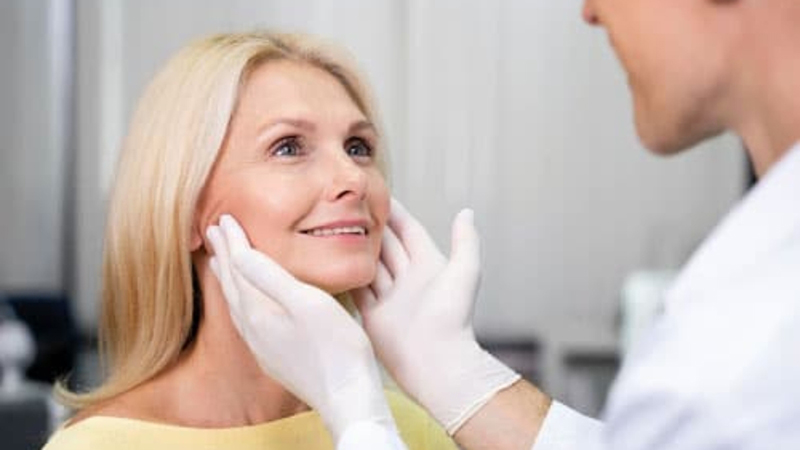
Fat transplantation is a relative newcomer to the field of plastic surgery, but the concept dates back to the late 1800s, when fat grafts were used to correct soft tissue defects and treat conditions including breast defects and hemifacial atrophy.
When liposuction became vogue in the 1980s, fat transplantation also found its place in treating a variety of facial deficits. Today, fat transfer is used to address a wide array of problems, including facial scarring, facial rhytids (sagging skin), and lip augmentation, as well as to treat difficult areas such as the glabellar furrows and nasolabial folds (the folds from the corners of your mouth to your nose).
As we age, some of us feel the face is the place to concentrate on looking younger since that’s what the world sees. Clearly, the face says a lot about one’s image, and liking what you see in the mirror can go a long way toward building self-esteem. With modern technology, it’s easier than ever to correct facial issues utilizing the facial fat transfer procedure: it’s a minimally invasive and straightforward way to plump up facial features and gain back a youthful appearance. This is a safe, well tolerated, long-lasting procedure that provides wonderfully natural-looking results. At Dr. Suarez´s office we will be glad to help you achieve that youthful look you have been desiring!
WHAT IS FAT GRAFTING?

Facial fat transfer goes by many names—microlipoinjection, facial fat rejuvenation, autologous fat grafting or transfer, fat transfer, free fat transfer, and fat injections—but remains a process of basically removing fat from one part of the body and moving it in another part. The fat can go many places, including the nasolabial folds (laugh lines), cheeks, lips, marionette lines (lines beside the mouth), and under the eyes. What better filler for your body other than your own fat? You already have it, it feels completely natural, and you won’t experience any immune problems. Bonus: If you decide on a liposuction procedure you can use harvested fat from that!
The body absorbs fat to some degree, of course, but over the years the procedure has been honed and perfected, and today we are seeing excellent, lasting results. Many factors can affect absorption, including how the fat is treated and concentrated, how the doctor removes it, how much you have injected and where, and how quickly your body heals. Dr. Suarez is always working to improve existing procedures and discover new techniques for facial fat transfer procedures.
CANDIDATES FOR FACIAL FAT TRANSFER
If you’re looking to minimize the appearance of laugh and frown lines, facial depressions, and wrinkles, you’re likely a good candidate for the procedure. If you have been diagnosed with lipoatrophy (loss of fat layer in the face that forms cheek and jaw contours), this could present a way to refill the hollow areas, which can take years off your face.
REASONS TO CONSIDER
You should consider this procedure if you have creased and/or sunken facial areas, if you want to improve your body contour and fill depressions, and—especially—if you are looking for longer-lasting correction that you can get from temporary fillers.
Although fat grafting is done on all body areas, the most common include the forehead, temples, under the eyes, jaw line, cheeks chin, lips, tear troughs under the eyes, and the area just above the nose and in-between the brows. Fat grafting can also help minimize facial scars and correct damage from acne. This simple procedure can augment all of those areas in a natural way, as long as the graft site has enough blood circulation to enable the injected fat cells to form their own blood supply.
Consider this: The areas to which the fat is transferred should appear fuller and softer and make you appear refreshed and rejuvenated. You may even see a skin-texture improvement.
RECOVERY
Most patients report that they are back to work within a week, but sometimes the procedure can require up to two weeks of rest. Strenuous activities should be taken off the books for a couple of weeks, and patients should closely follow Dr. Suarez’s post-treatment instructions. Steer clear of cosmetics for a couple of days and try as hard as you can to immobilize the treated area. The more stable you keep it, the better chance the fat cells can reimplant.
HOW LONG WILL MY RESULTS LAST?
The amount of fat that can be absorbed back into the body after this procedure is anywhere from 10-90%. Some patients might need more than one treatment, but typical results of fat grafting can last from 3 months to 3 years, depending on the individual. If the injected fat establishes a new blood supply and receives the nourishment it needs for survival, it’s possible the results will be permanent! Dr. Suarez is an experienced, skilled surgeon with outstanding skills in fat grafting, and will ensure that the results are long lasting.
To help improve the results and make them last longer, do not smoke, wear sunblock, exercise regularly, stay well-hydrated, get enough sleep, and avoid processed foods and eat a healthy diet.
CONSULT WITH DR. SUAREZ
If you think fat grafting is for you, click here to make an appointment with Dr. Suarez or call us now at (506) 40015317 or whatup 70412440. We will be ready to help.
Please be ready to discuss your personal medical history, including past surgeries, chronic conditions, and any major illnesses you’ve experienced. Prepare your questions so that you can make an informed decision and find the information you need. Dr. Suarez will discuss all of your options with you and collaborate to come up with a plan that meets your needs.
